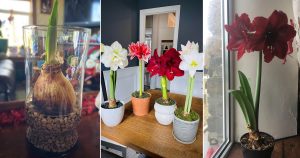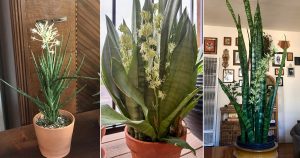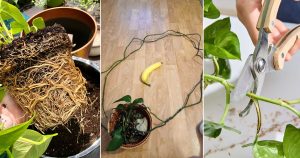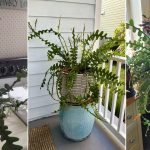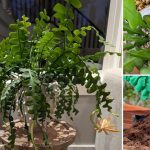Last year I experimented a lot with starting seeds indoors and learned a few things in the process. I thought I’d share a bit of what I learned through trial and error so that you can skip my mistakes.
LIGHT
The hardest thing to provide seeds started indoors is light. It’s almost impossible to use just the light from windows. Most likely you’ll need a grow light. You can use something as simple as an incandescent grow bulb that fits into a regular household lamp. They are available for purchase for between $5-$15. I have one such bulb in an old lamp that has a moveable arm.
You’ll need to keep the light on for between 12-15 hours each day. The easiest way to do this is to use a timer that you plug the lamp into, which will turn the light on and off automatically. Timers are really cheap and can be picked up at a hardware store. Of course, you could also turn the lights on and off yourself. But seeds need both light and dark, so don’t think you can get ahead by leaving the light on all the time.
SOIL
I’ve had the best results using peat moss mixed with perlite. I’ve also had success with Jiffy peat pellets. What hasn’t worked for me is regular potting soil. I don’t know why, but I’ve had trouble getting good germination results with the potting soil I use outdoors.
You should know that peat may not be the most environmentally friendly seed starting medium. A more eco-sensitive option is coir, which is made from the husks of coconuts. You should be able to get peat or coconut coir where ever you purchase potting soil.
WHEN TO SOW
The first thing you need to know is when your last frost date is. This is the day which is, on average, the last day your area can reasonably expect a frost. If you don’t know your last frost date, this site will tell you the date for your area.
After you know that date, count backwards 4-6 weeks. That is the date you should sow your seeds indoors. The longer the particular type of seed you are growing takes to germinate, the more time you should allow. But a quick to germinate seed should be fine with 4 weeks. You can find out how long a particular seed takes to germinate by looking at the back of the seed’s packet.
WATERING
In my experience, it’s best to water seedlings and yet-to-sprout seeds from the bottom. By this I mean putting the container the seed/ling is growing in into a larger container that has an inch or two of water in the bottom and allow the dirt in the container to draw up the water through the drainage hole.
If you water from the top (i.e. the normal way) you are likely to disrupt the seed or damage a delicate seedling.
MISCELLANEOUS ADVICE
- If you have old seeds that are large–like sweet peas–they are still good if they sink when put in a cup of water.
- Follow the back of the seed packet!
What have you learned about starting seeds indoors? Have any questions? Ask them in the comments!

